BASE Water Sensor
Time: Spring 2023
Role: Mechanical Engineer, Storyteller in team of four
Tools: SolidWorks, Figma, 3D Printers, Laser Cutter
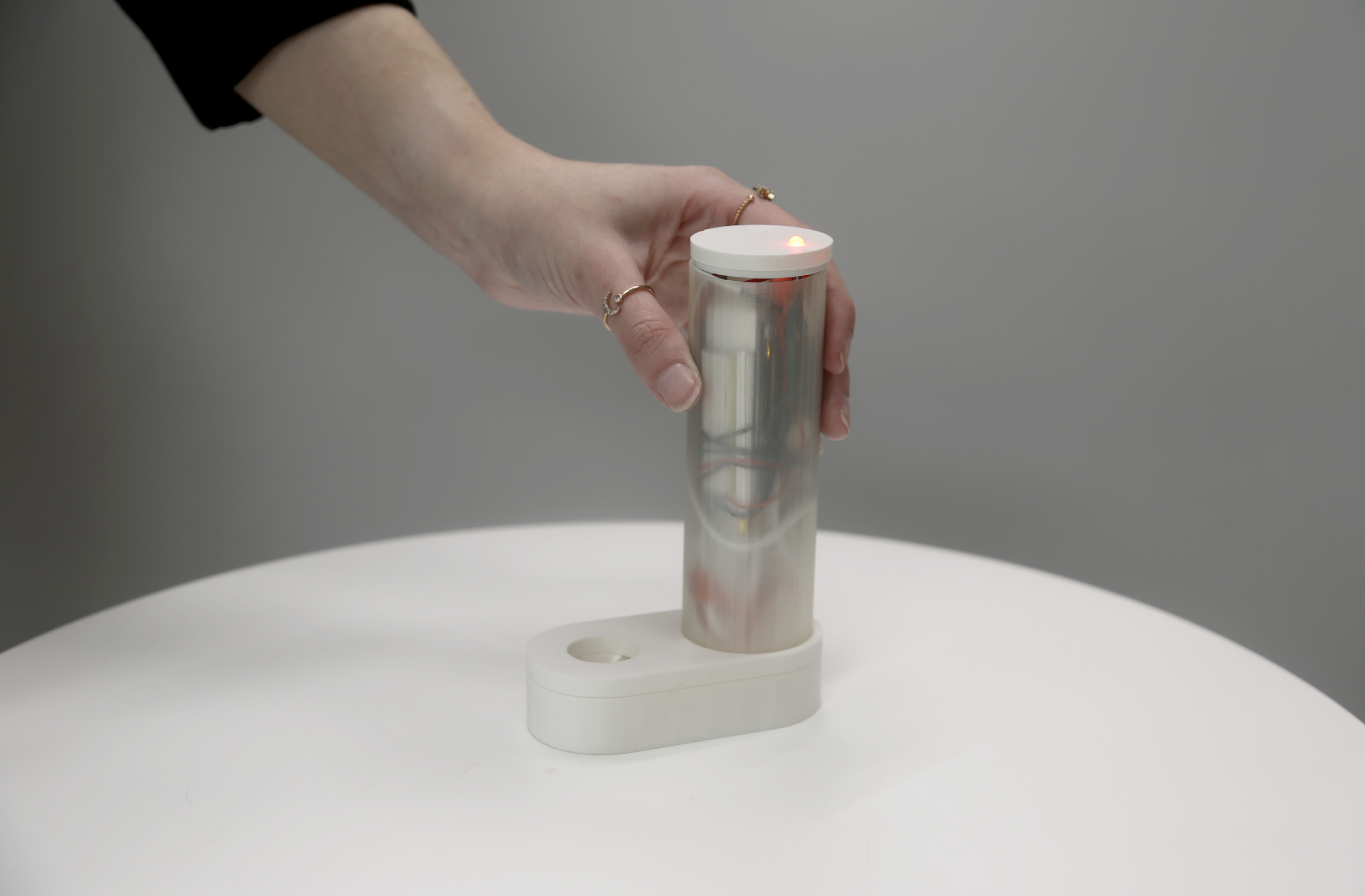
SUMMARY
In Spring 2023, as part of my Master’s in Design Engineering at Harvard, I contributed to the creation of the BASE Water Sensor project, an initiative addressing water contamination from the textile industry. As a Mechanical Engineer and Storyteller, I led the design and narrative of DripTracker, one of three products we developed to provide real-time water quality data. My role involved utilizing CAD for product design, engaging in iterative development, and enhancing user experience through storytelling. This project demonstrated my capability to merge technical engineering with public engagement, culminating in solutions that are not only innovative but also respectful of environmental and public health concerns, showcasing my commitment to creating impactful, user-centered technologies.
PROBLEM
About half of US water is too polluted for swimming, fishing, or drinking (1).
The EPA has repeatedly lied about water quality readings.
Textile effluent contains heavy metals, which has polluted many of our waterways.

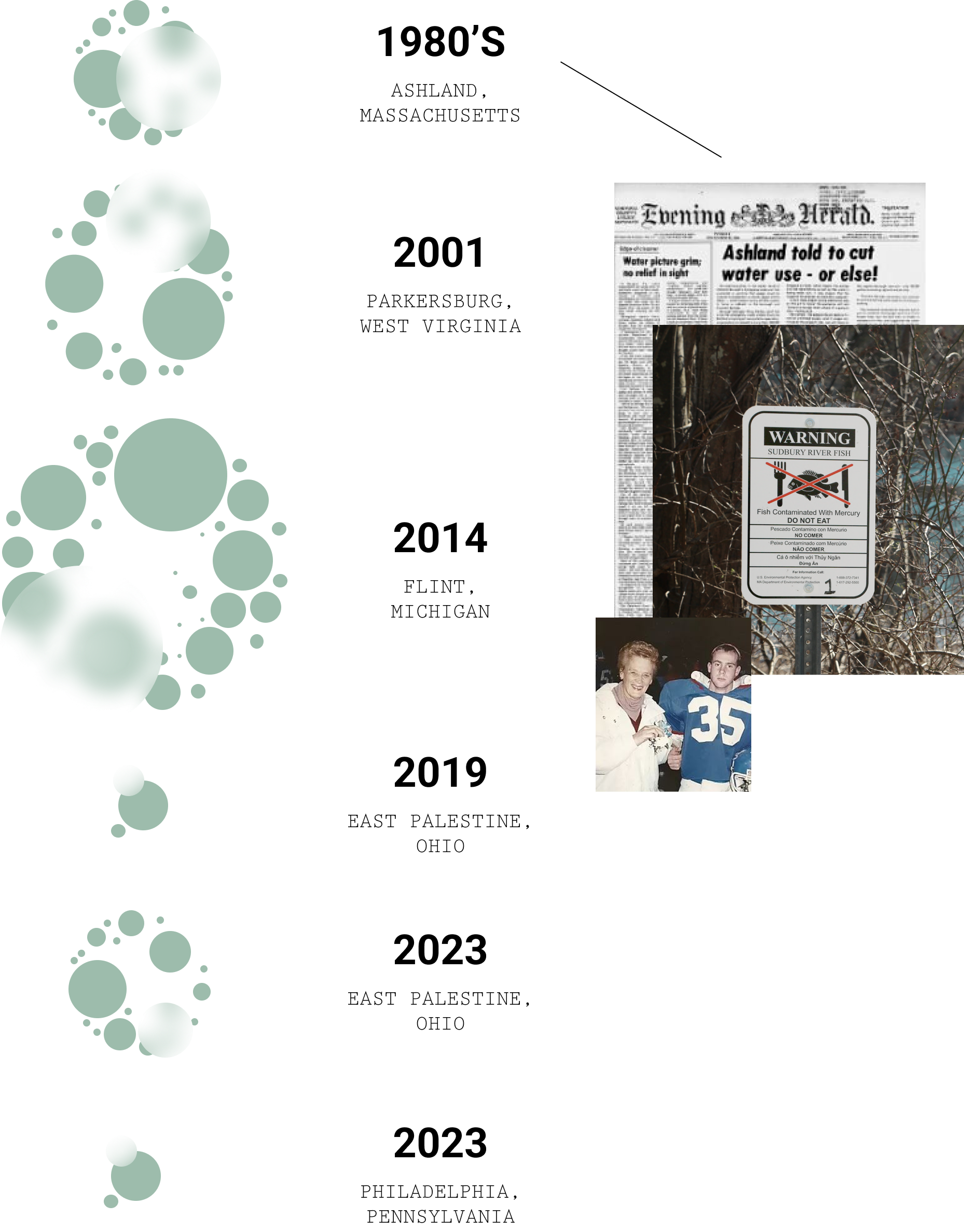
RESEARCH
The team studied multiple case studies of water contamination in the United States over the past fifty years. It was apparent that the community in need is usually very dependent on agencies to update them about their water quality and the state of emergency. The people do not have the power to understand their own water quality, and have been given misinformation countless times.
Moving forward, the project focused on Ashland, MA as this was a direct instance of water contamination by the textile industry that resulted in harm to the local community. It was also conveniently close to Harvard, allowing us to travel to the site.
Between 1965 and 1978, Nyanza Inc and other companies manufactured textile dyes, leading to large quantities of industrial waste and contamination of soil, ground water, and wetlands with mercury, chromium, arsenic, lead and more.
Effort to clean up the damage caused to the local water and other sources is still being conducted under the Environmental Protection Agency (EPA) SuperFund program.
Kevin, only 26 years old, had died from one of the rare cancers that locals were being diagnosed with.
It wasn’t until after 8 years of begging for government involvement that the EPA finally conducted a study that proved in the end that the Nyanza company had been the cause.
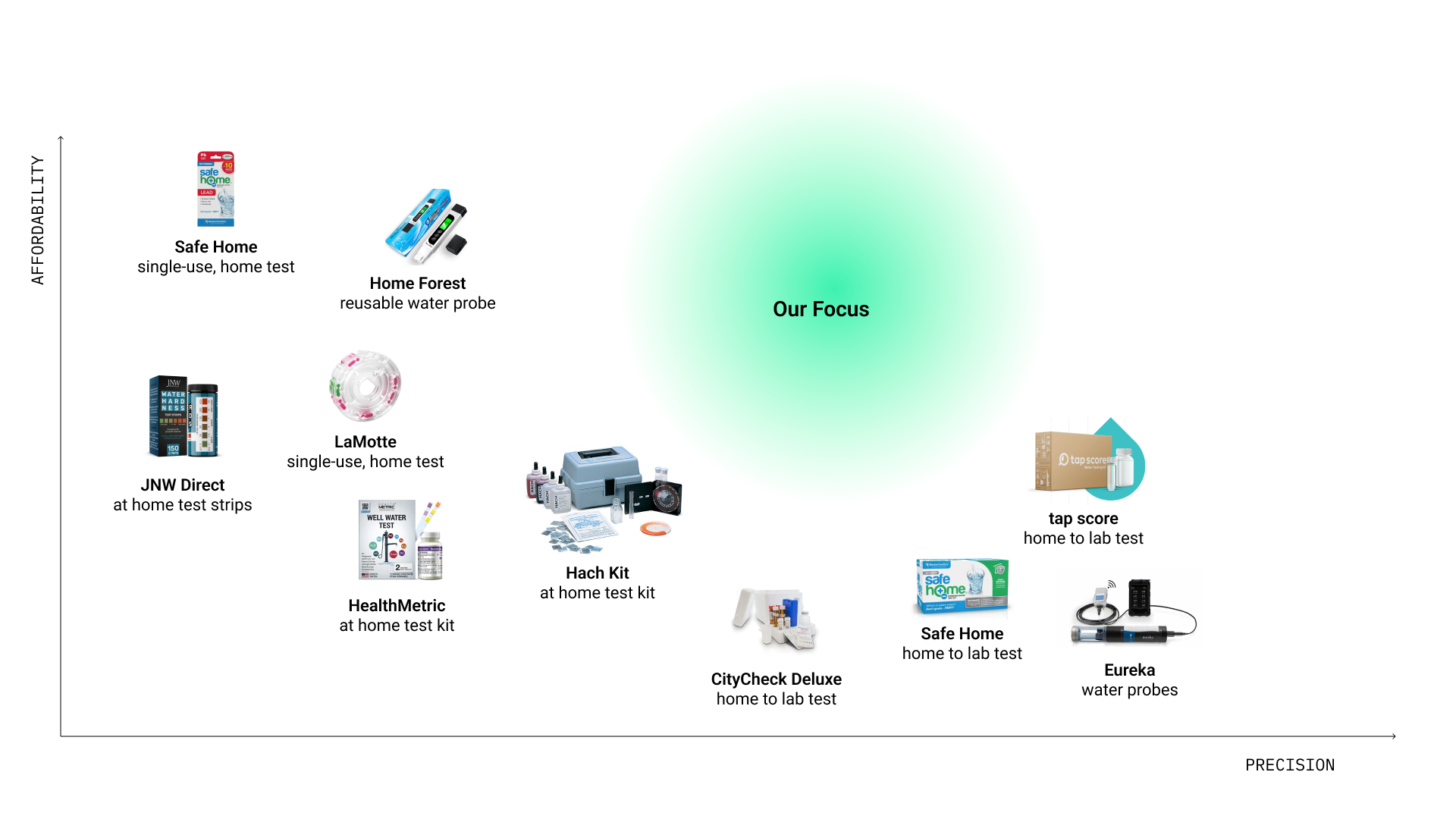
An extensive comparative analysis was conducted on exhisiting solutions. Here were the key findings:
1. Existing solutions with high accuracy are expensive
2. Testing textile dyes requires reagents that are highly toxic
3. There are no consumer facing products connected to a decentralized network
PROCESS
From our research, it was clear we needed an affordable, reliable device to bring the power back to the people for their safety. We experimented with many forms and numerous chemical sensors.

We landed on a device that could be portable with rapid testing, while also be attachable to a typical kitchen sink. This would allow users to test their drinking water seamlessly and also have the option to test water on their property.

The final design includes a cylindrical shape to blend in with a typical sink faucet along with a steel finish on the attachment. We want people to know they have power and control over their water quality, but we did not want to make the object so noticable that they were constantly reminded of the threat. Our focus was a simple, discreet, futuristic aesthetic.
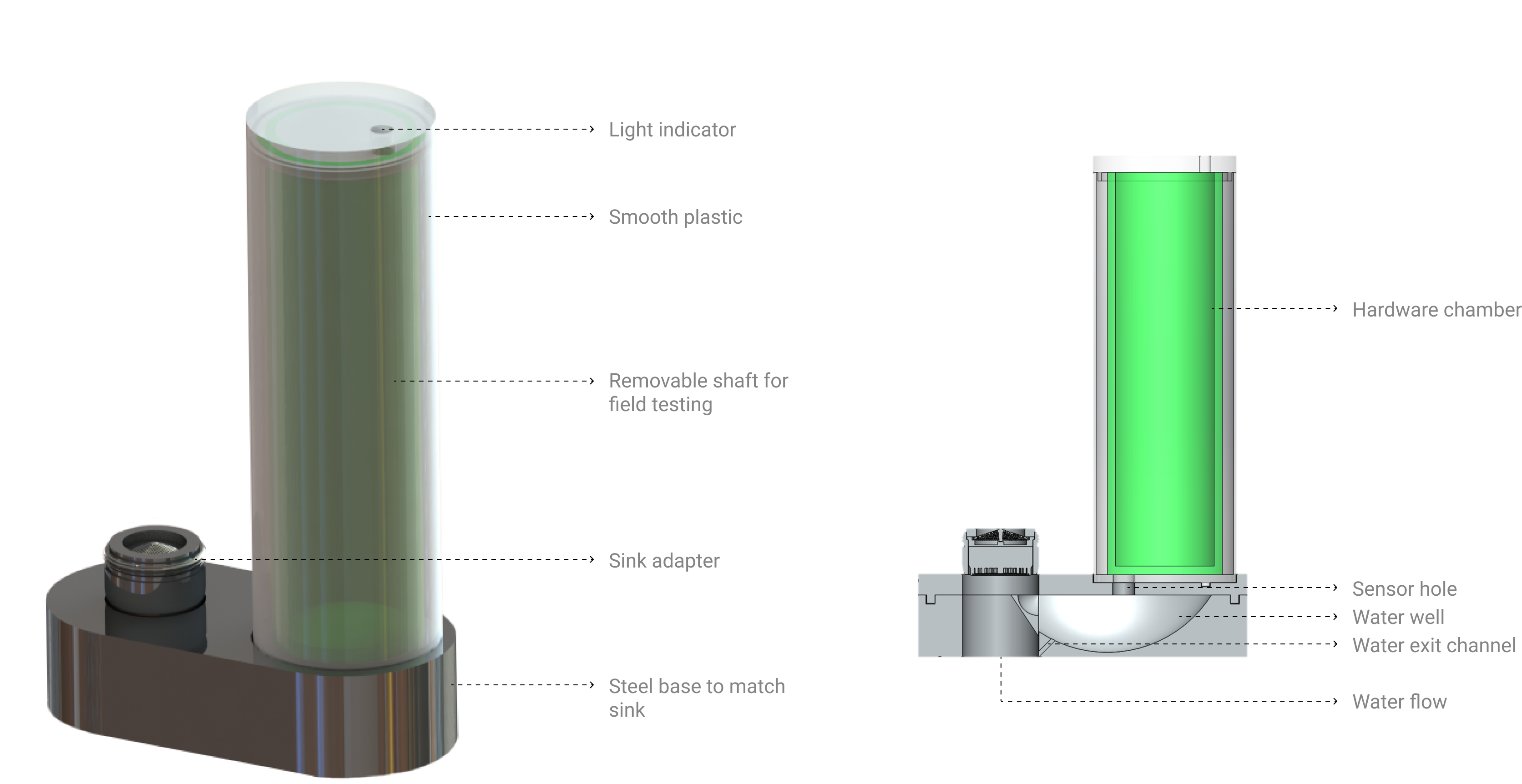
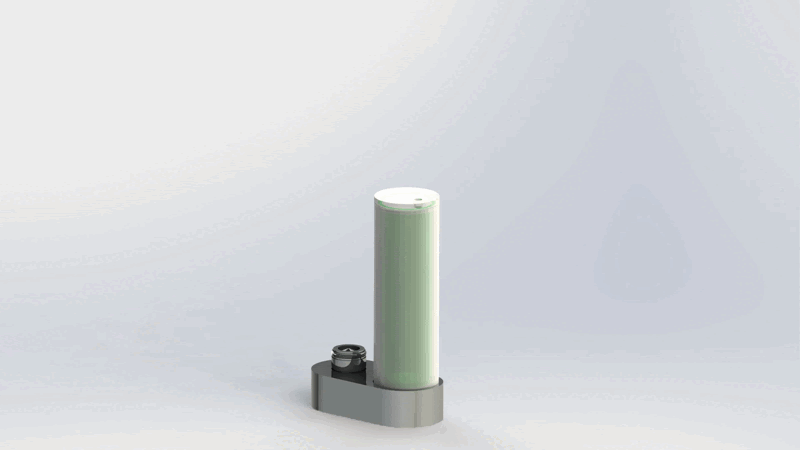
Part of the project involved looking towards the future. This is why we created three forms - one for emergency response, one for immediate use for individuals, and a future one integrated directly into the home.
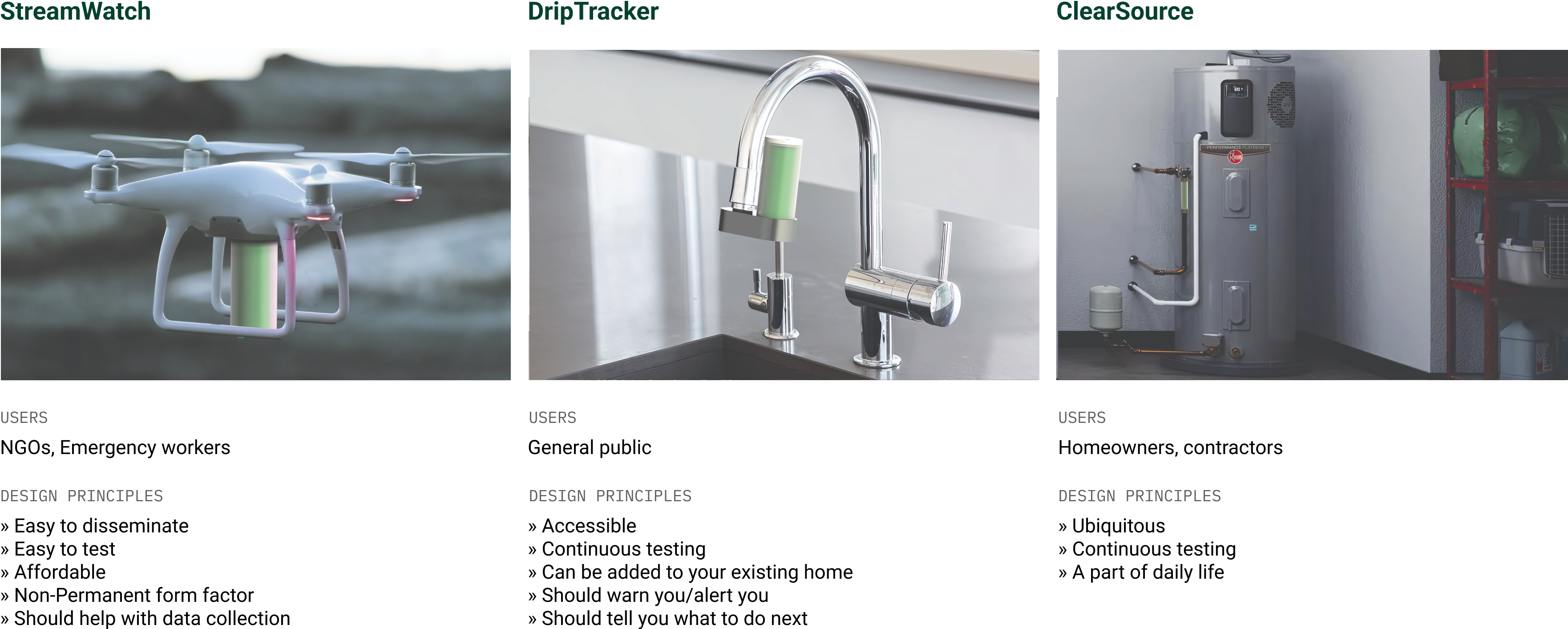
The final showcase revolved around the theme of a "fashion show". This was an open ended installation where we decided to have a somber museum-like exhibit for guests to silently observe. One key feature included an interactive table for participants to test water samples themselves and see how contamination spreads in a neighborhood.
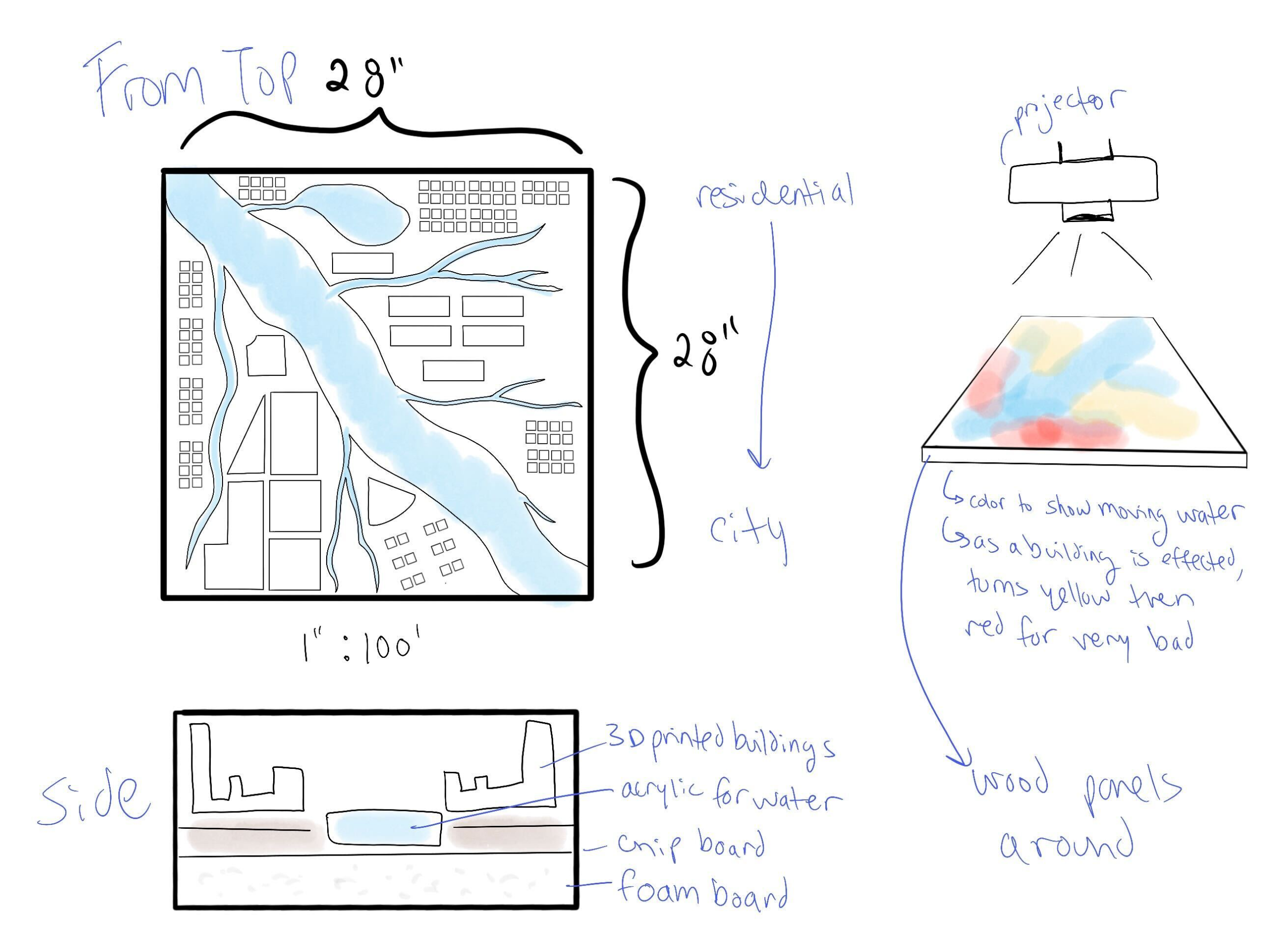
Result
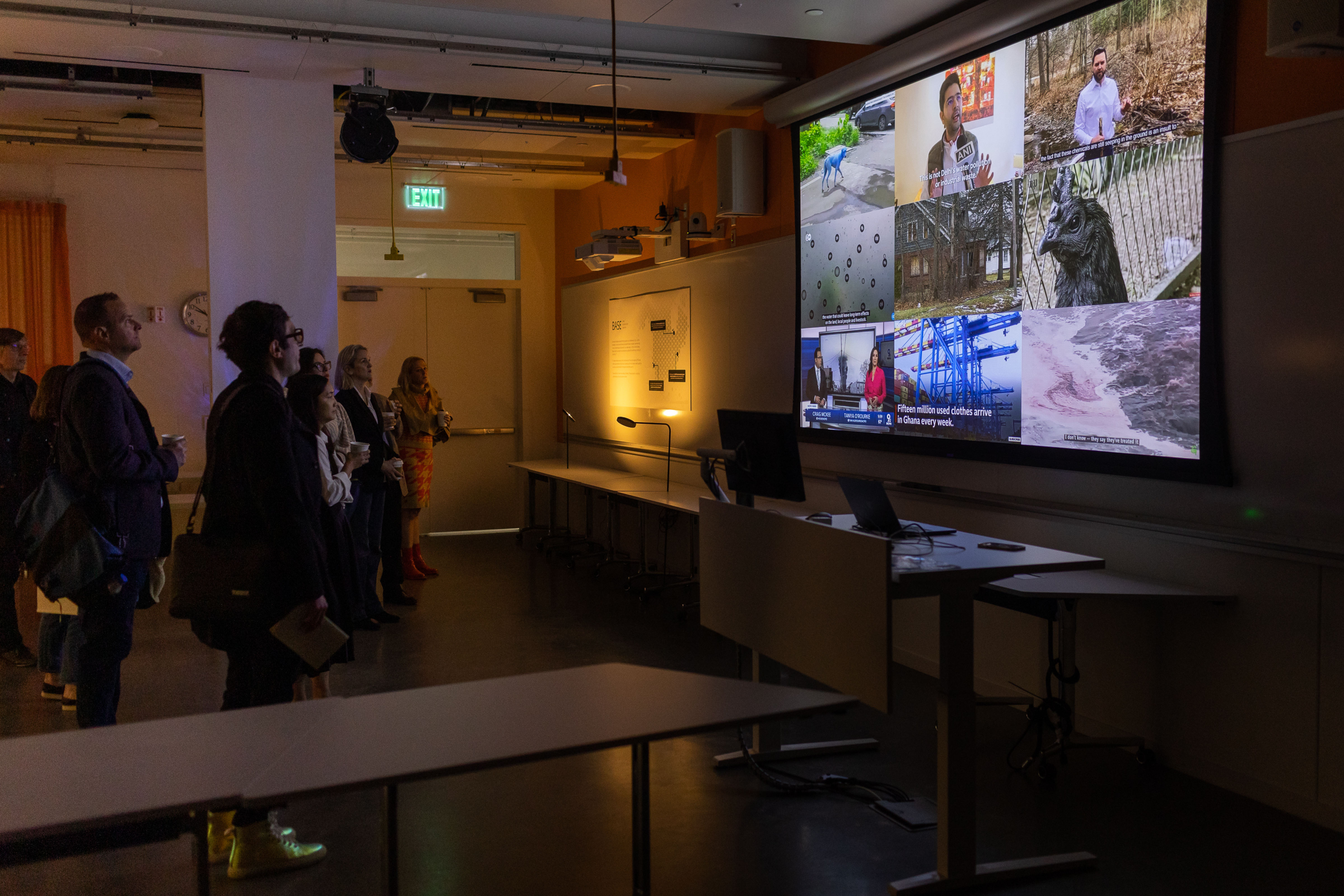
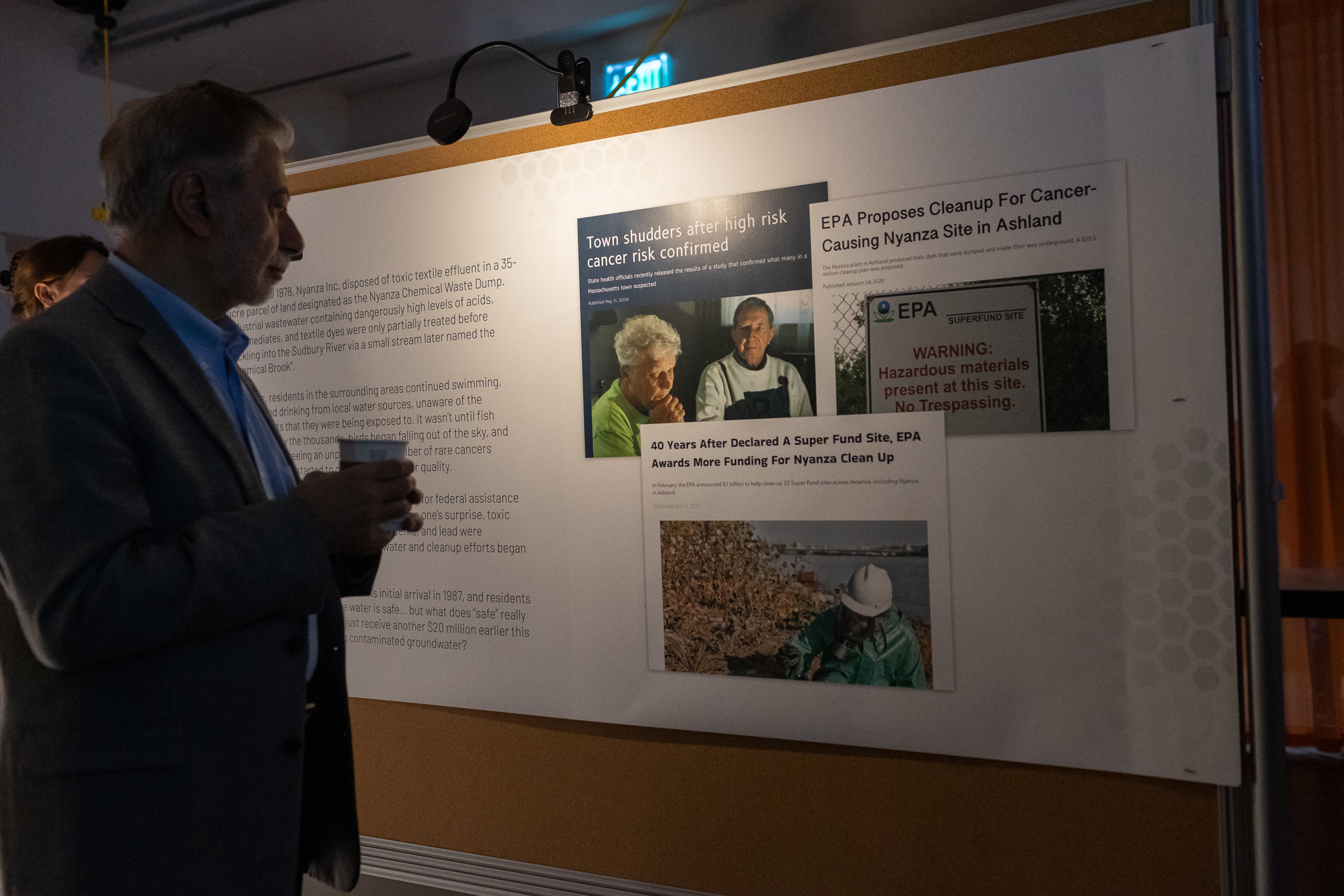

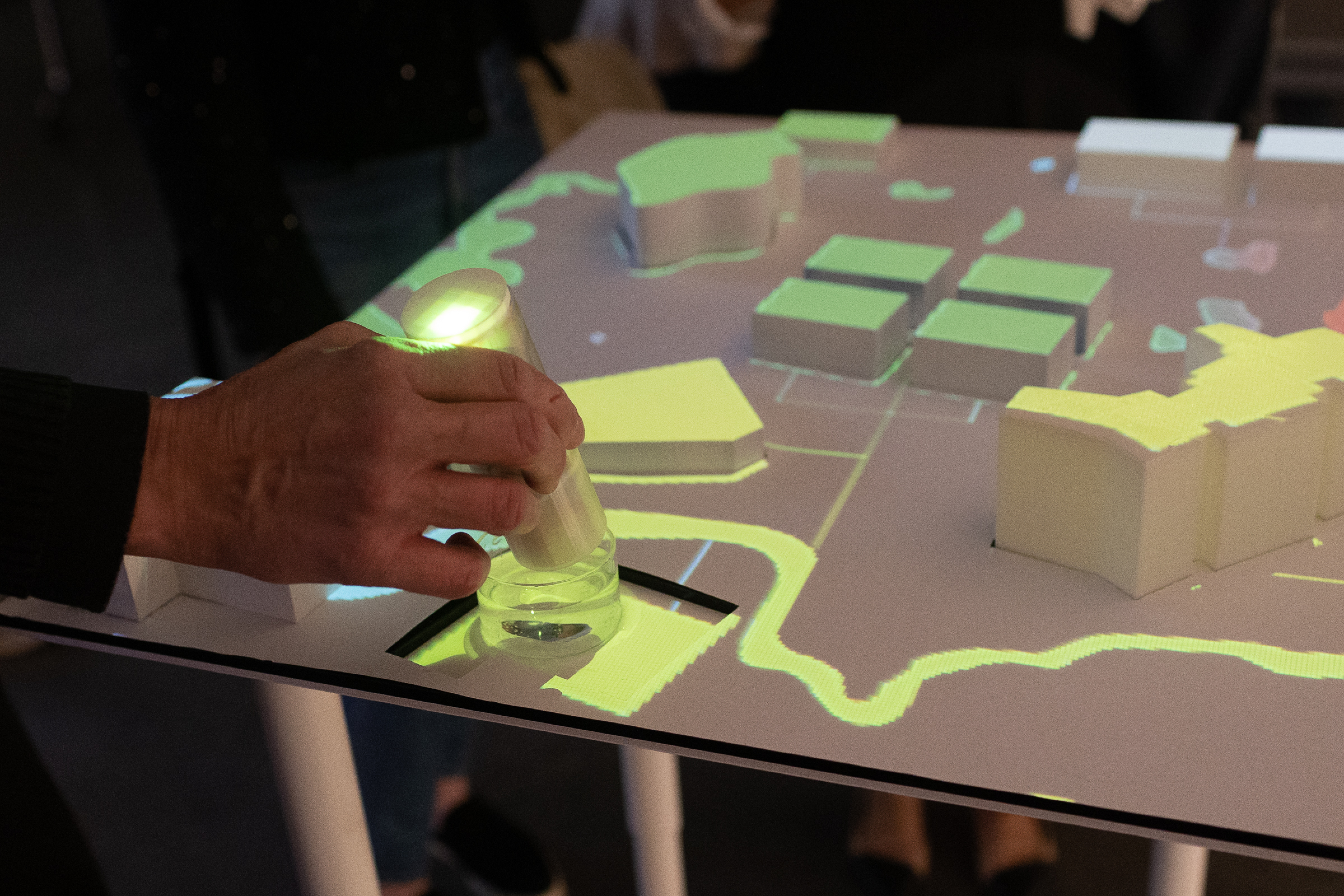
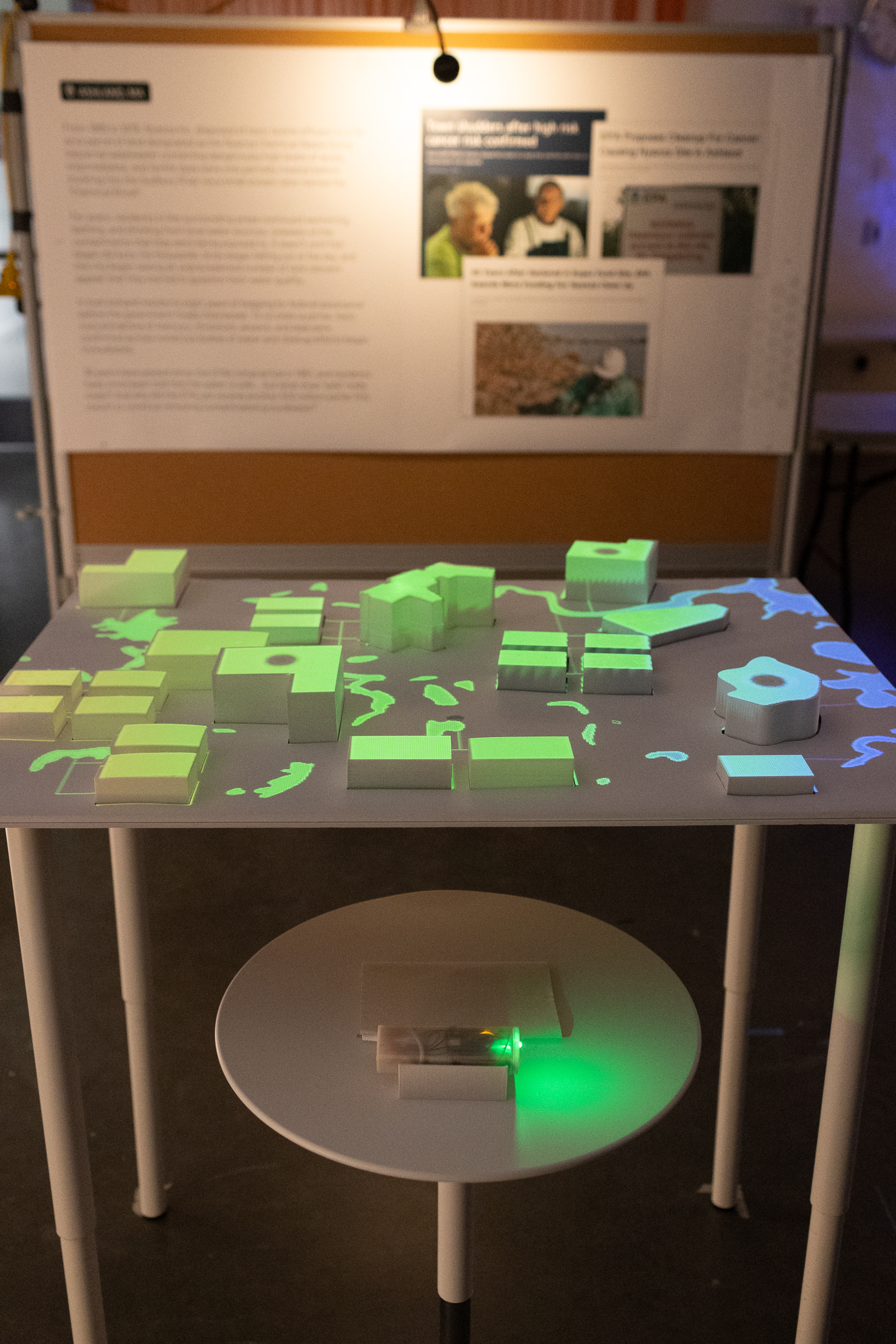
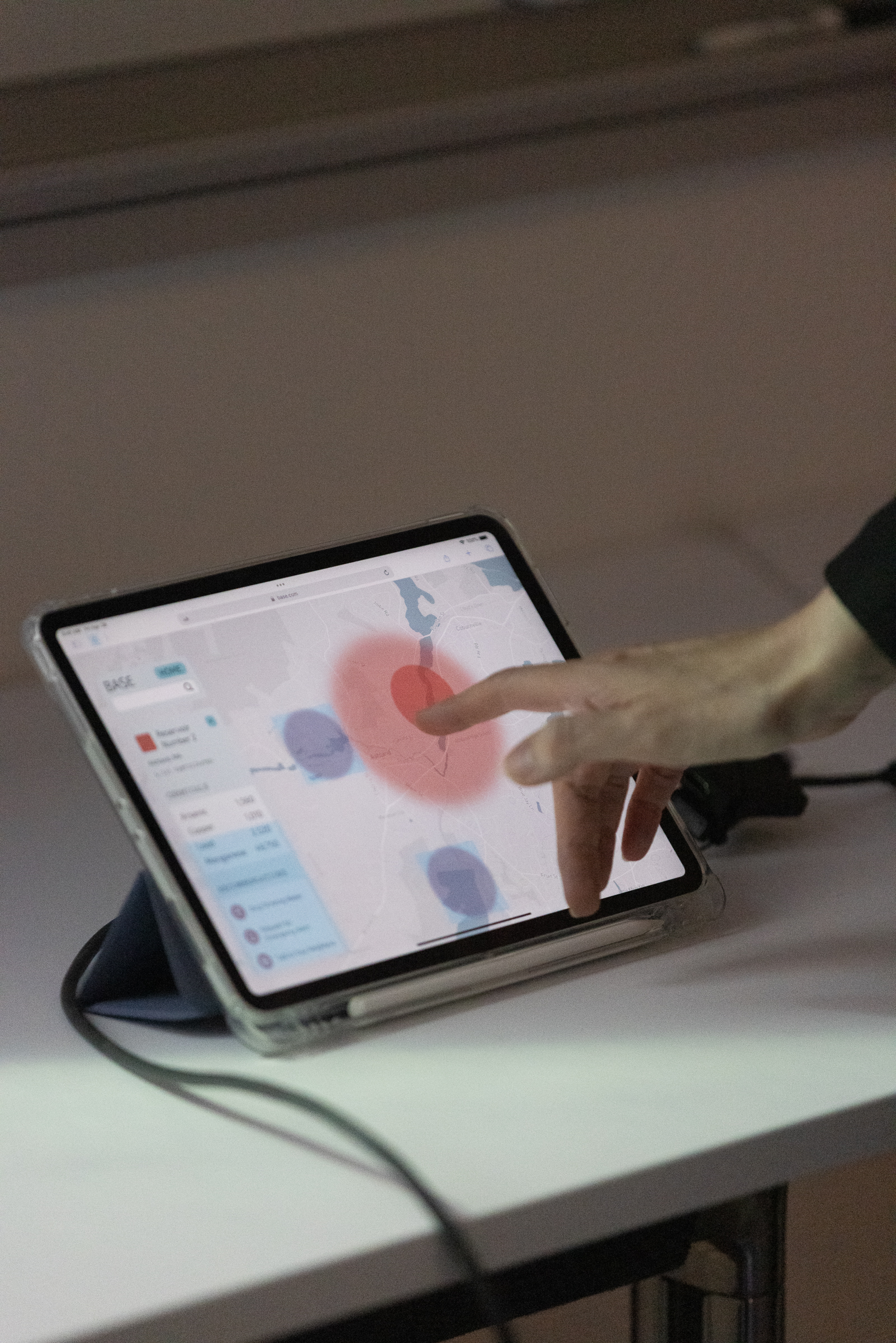
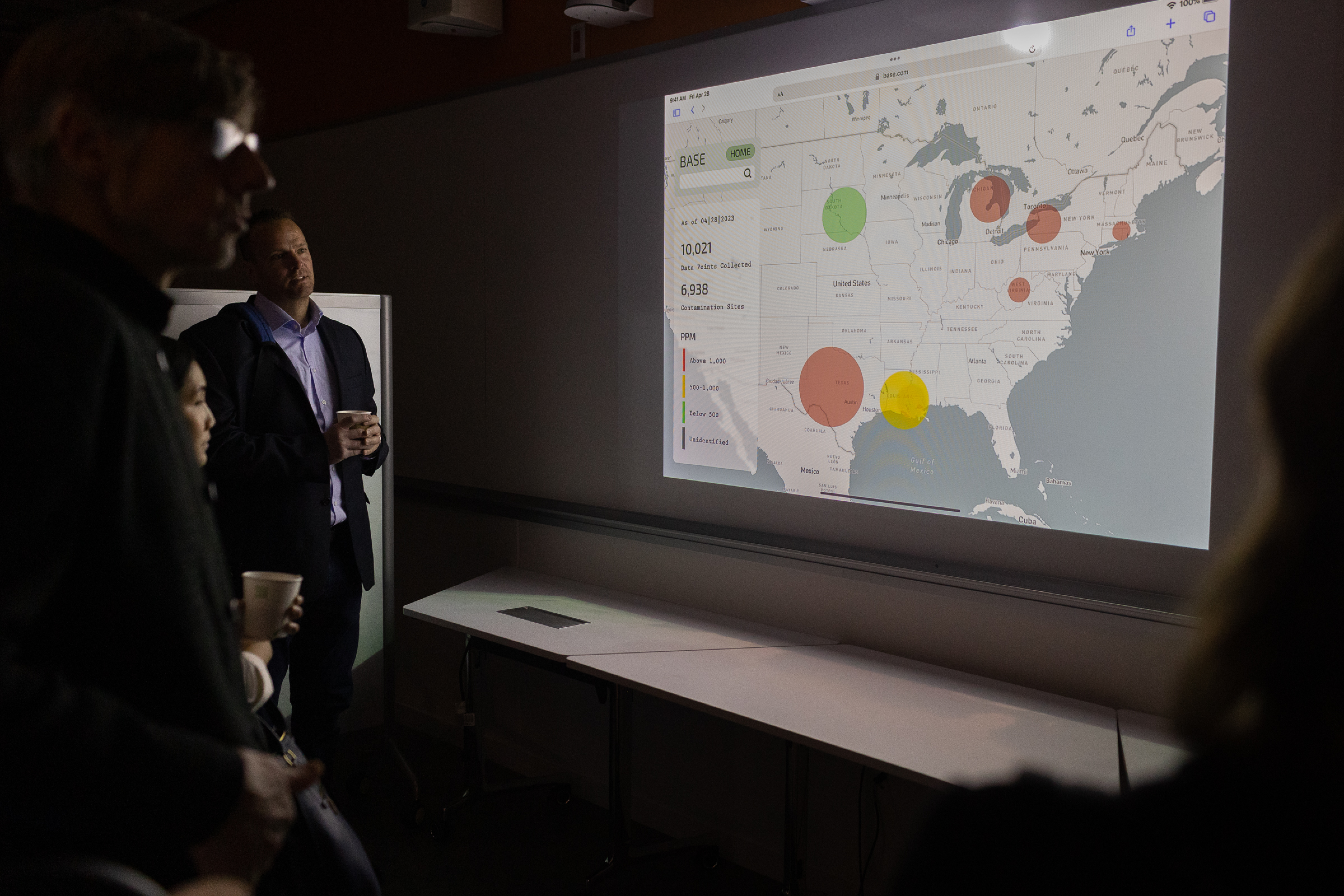
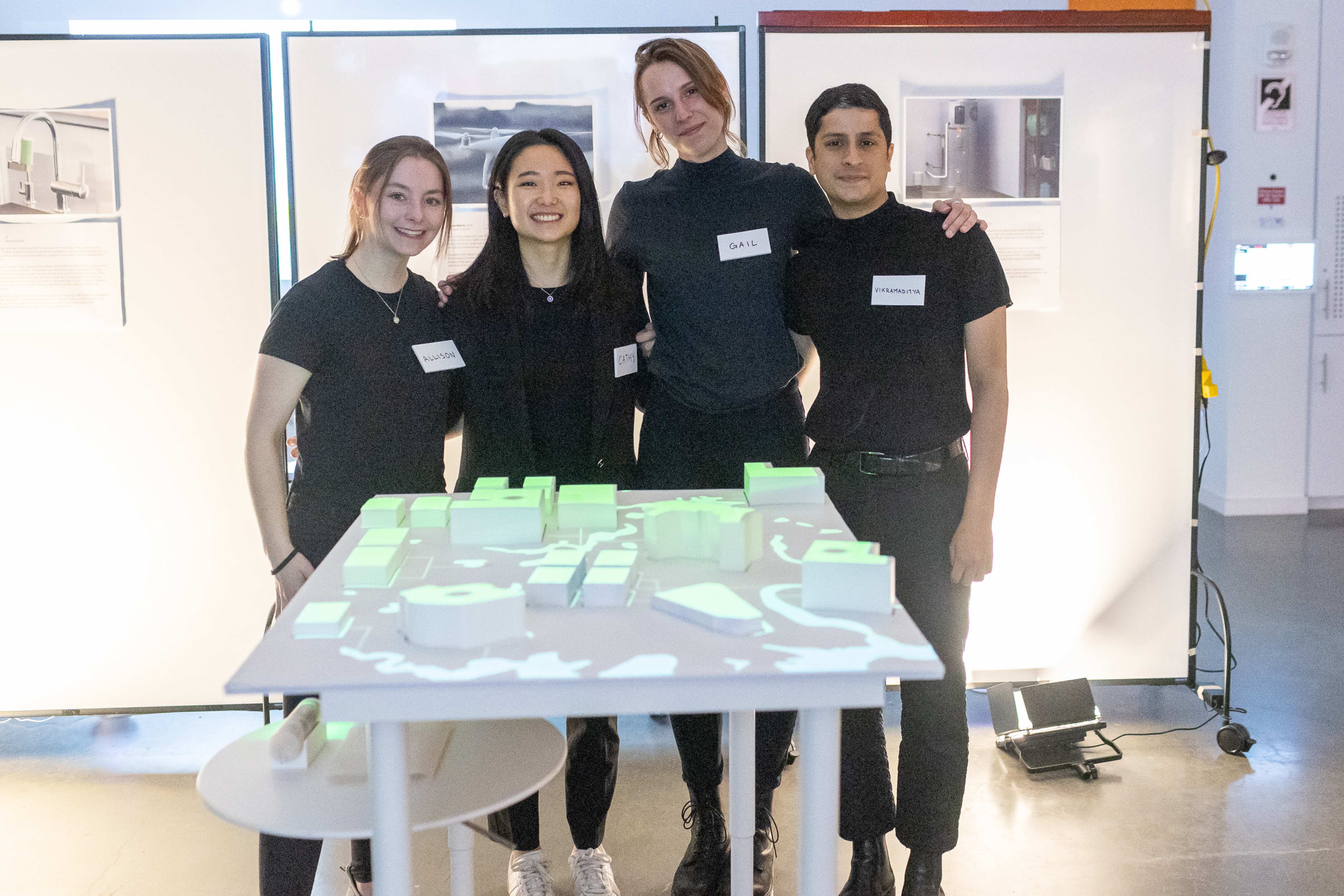
References
1) Ali, Shirin. “About Half of US Water “Too Polluted” for Swimming, Fishing or Drinking, Report Finds.” The Hill, 28 Mar. 2022, thehill.com/changing-america/sustainability/environment/600070-about-half-of-us-water-too-polluted-for-swimming/#:~:text=Nearly%20half%20of%20the%20rivers.